Introduction
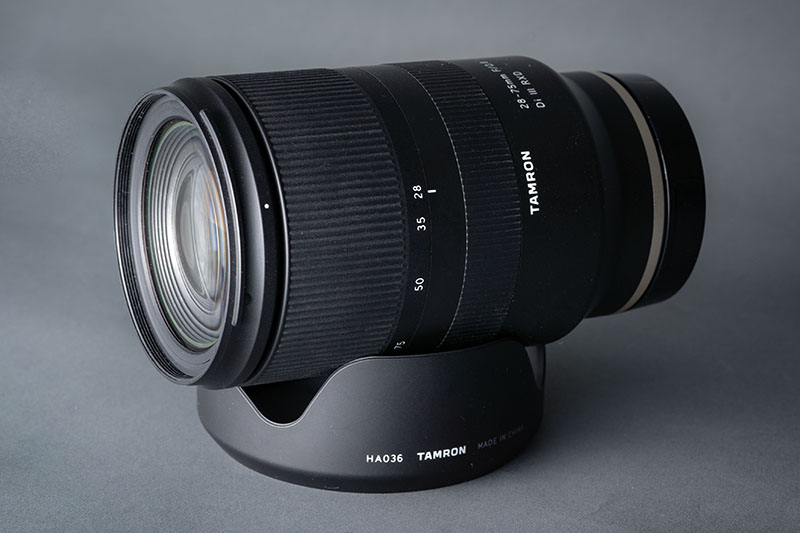
The Tamron 2.8/28-75 Di III RXD is the first third party E-Mount autofocus zoom lens. I am excited about this lens because it defines a milestone for the E-Mount system: until now, we only had a choice between Sony’s budget line, Samyang and the other (super-)expensive Sony/Zeiss options. The three classic third party manufacturers (Sigma, Tamron, Tokina) have been very tentative in their commitment to the E-mount system, and this lens is the first one that really changes this situation. The specs of the lens look spectacular on the paper, so let’s find out about its performance in the field.
In this review I will check the performance of my own copy that I used for several months now.
Sample Images
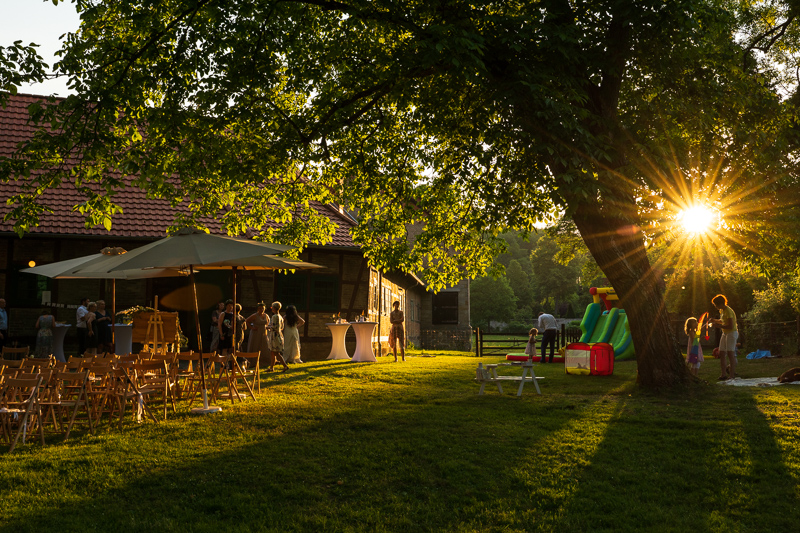
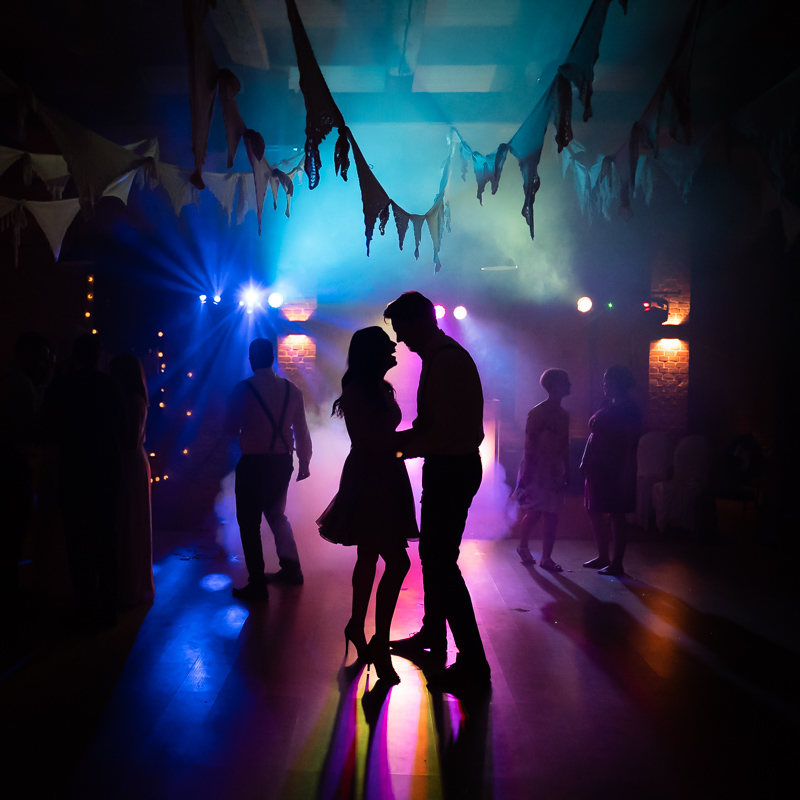
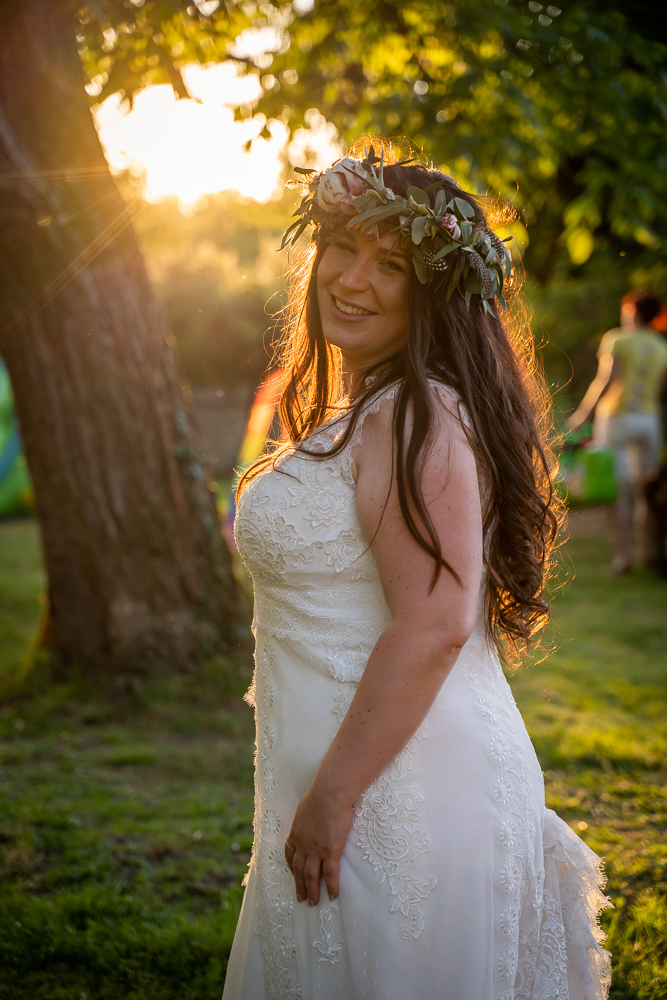
Contents
Specifications / Version History
As a Sony shooter, you currently have five native options when it comes to standard zoom lenses:
- Sony Zeiss FE 4/24-70 ZA OSS
- Sony FE 4/24-105 G OSS
- Sony FE 2.8/24-70 GM
- Sony FE 3.5-5.6/28-70 OSS
- Tamron 2.8/28-75 Di III RXD
All options are aimed at different groups. The Sony FE 3.5-5.6/28-70 is okay as a kit lens and also usable for the documentation of daily life, but I wouldn’t recommend it for serious photography. The performance of the Sony/Zeiss FE 4/24-70 doesn’t justify the price tag in our opinion. The Sony 2.8/24-70 GM and the Sony 4/24-105 G OSS are amongst the best standard zoom lenses on the market and are excellent choices with little downsides except for size and price.
So where does the new Tamron 2.8/28-75 find its niche? It is as thin as (and just a bit longer than) the 4/24-70 but as fast as the bulky 2.8/24-70. This is even more exciting when the price is taken into consideration: It costs just $800 MSRP, so $400 less than the slower Sony 4/24-70 ZA and almost a third of the Sony 2.8/24-70 GM ($2.199).
The 28mm starting focal length is probably the key to understanding the combination of small size and fast aperture, especially compared to other the 24-XX options on the market. On the boards, this is one of the most discussed topics. 4mm on the short end are significant and noticeable but it really depends on the intended use case. I see this as a big disadvantage if that lens is the only travel/ landscape lens. On the other hand, it makes a useful combination with an UWA lens. If you plan to use it as a documentation lens, (weddings, family life) the 28mm focal length is not a limitation at all. The 5mm on the long end are not really significant, and hard to notice when the lenses are not compared side by side.
Prior to its release, Tamron claimed their new lens rivals the 2.8/24-70 GM lens. I think they didn’t do themselves a favor with that. Of course both lenses can be used for exactly the same thing but the lenses are not in the same class. More on that later.
The Tamron 2.8/28-75 Di IIII RXD has the following specifications:
-
- Diameter: 73 mm
- Field of view: 75° to 32° (diagonally)
- Length: 117.8 mm
- Weight: 550 g
- Filter Diameter: 67 mm
- Number of Aperture Blades: 9 (rounded)
- Elements/Groups: 15/12
- Closest Focusing Distance: 0.19m
- Maximum Magnification: 1:2.9 (28mm), 1:4 (75mm)
- Mount: Sony FE
You may also have a look at Tamrons’s official page.
Reviewing zoom lenses is a real big bunch of hard work. If you appreciate this effort, please consider buying your lens using one of these affiliate links:
You can get one for $899 at Amazon.com (affiliate link)
or 829€ at Amazon.de (affiliate link).
Handling / Build Quality
The lens ships well packed but without any additional accessories except for the lens hood.
The build quality is comparable to the Sony 3.5-5.6/28-70 OSS, maybe even a tad below that. That means that the lens is well assembled and without play in the focus/zoom rings but without the fancy and sturdy impression of the other available FE-lenses. The lens barrel is made of plastic and the focus and zoom rings are rubberized. The lens mount is made of metal and has a rubber gasket:
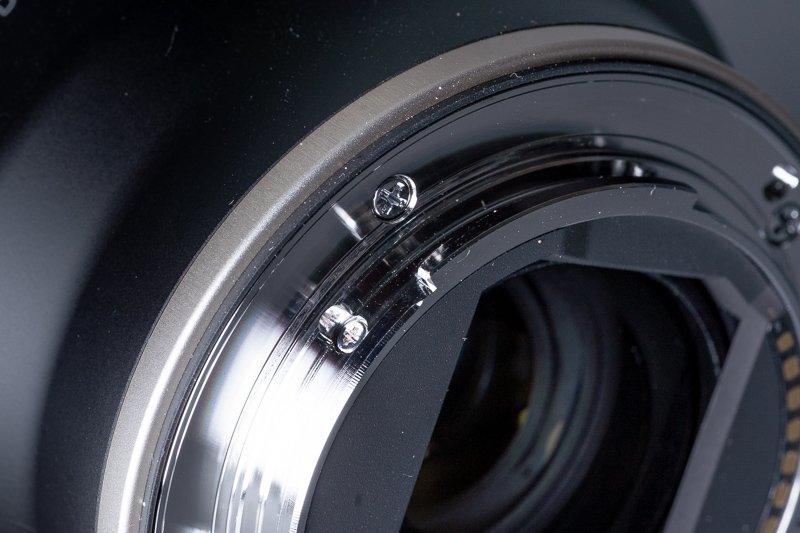
I was surprised that the joint between both halfs of the lens is on the top side of the lens and easily visible (picture below). That looks and feels cheap.
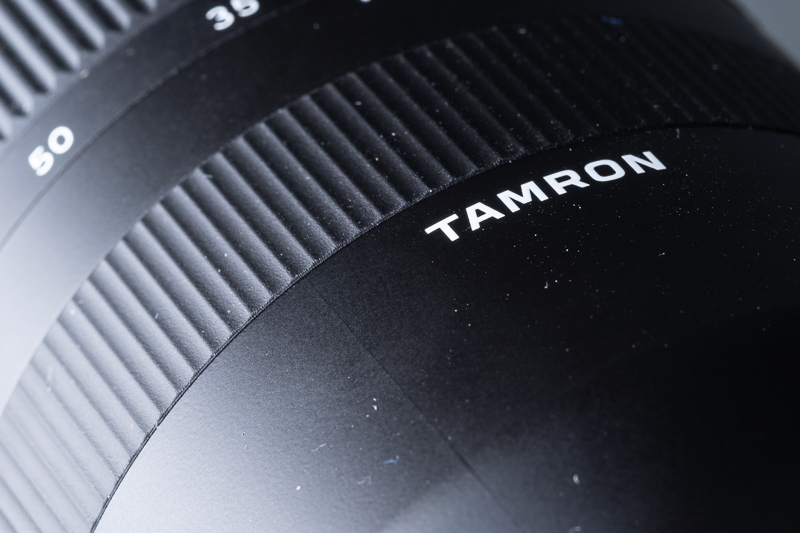
The lens hood is made of cheap feeling plastic, quite small and has a sharp burr on the frontside. At least it locks safely, athough it lacks a release button.
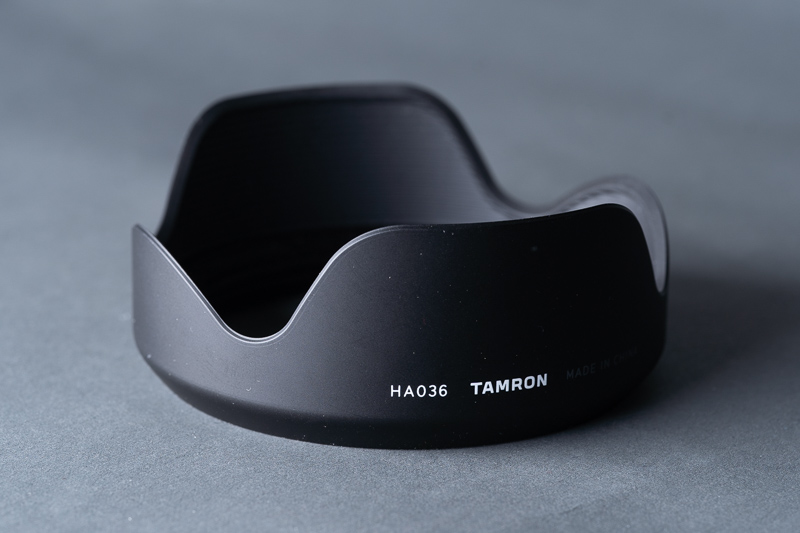
It takes about 90° turning the zoom ring from 28 to 75 mm:
The zoom ring is pretty stiff and has a high level of fricton which contributes to the perception of budget build quality. The good side effect is that the lens is free of zoom creep.
Unfortunately the lens lacks the focus hold button that the recent Sony lenses are featuring.
The most annoying thing about the handling is that the focus and the zoom ring are in the wrong order, at least for my taste. Fortunately, they feel quite different, so I got used to that quite fast. The manual focus ring is quite narrow but still useable.
Apart from those negatives, I prefer the size and weight of the lens greatly over the size and weight of the Sony 2.8/24-70 GM. The lens is much easier to handle and also much less conspicuous if you don’t want to attract too much attention.
Autofocus
The lens’ focussing is quick and quiet but not totally silent. The AF performance feels quite good, even in lower light. I don’t think that it is as fast as the fastest FE lenses (GM 24-70 for example), but it is among the faster ones and does a good job at tracking motion, even of playing kids.
Manual Focus
Manual focusing is comparable with the Zeiss Batis lenses which feels okay, at least with the 3rd generation Sony cameras.
This lens doesn’t have a linear transmission/coupling of the focusing ring. This makes manual focusing less direct than the recent Sony lenses.
Of course, this is a focus-by-wire lens. Therefore, the lens has no hard infinity stop and does not feature a distance scale on the lens.
Vignetting
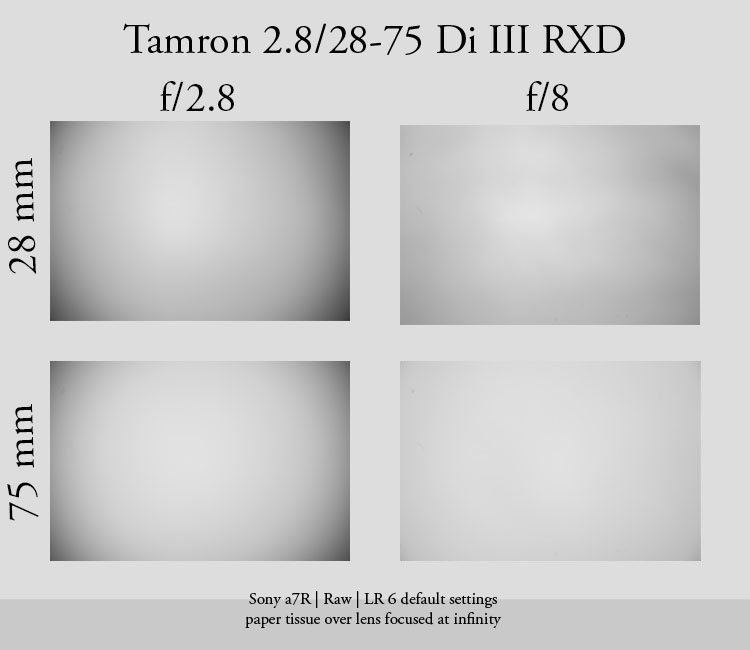
At the short end the vignetting is very strong (3.1 EV) and strikes in pretty abrupt. It improves to 1.6 EV at f/8.
At the long end, the lens shows the same behavior. It shows tremendous vignetting of 3.3 EV that strikes in pretty abrupt and improves to 1EV at f/8.
The lens relies on auto correction in terms of vignetting. This is probably a tribute to the small lens diameter and causes noise towards the corners when the correction is activated.
Sharpness
Infinity
28mm:
- f/2.8: Very good sharpness in the center and midframe, corners are quite a bit behind the rest of the frame
- f/4 & f/5.6 : center and midframe are excellent, corners improve
- f/8: Image is sharp across the frame, corners are very good now
- There is some inward bound field curvature, take care of that
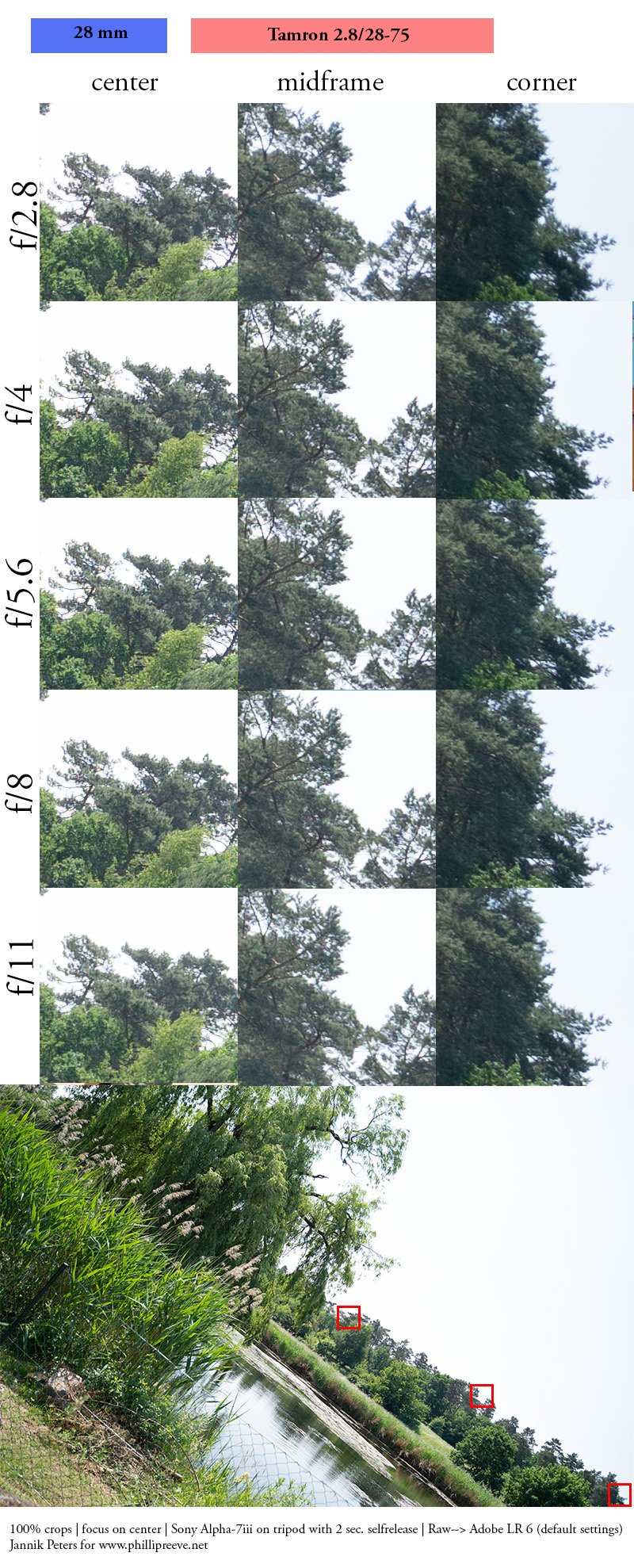
35mm:
- f/2.8: Very good sharpness in the center, and good sharpness in the midframe. Corners are very soft
- f/4: Excellent center and midframe, corners still soft
- Corners improve until f/11 but still not perfectly sharp.
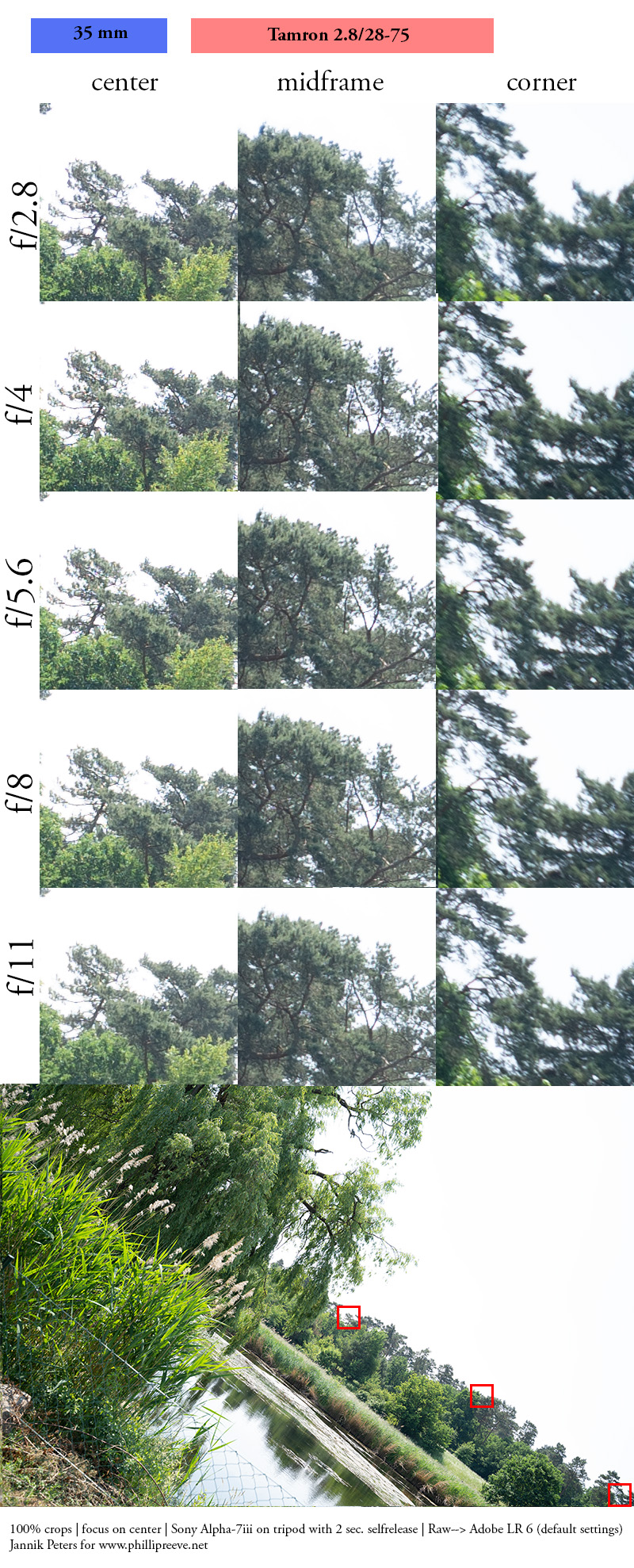
- 50mm:
- f/2.8 & f4: Excellent sharpness in the center, midframe quite sharp, corners mushy
- f/5.6: corners get slightly sharper, midframe is excellent
- f/11 : corners are ok now, but not really good. This affects only outer 10% of the image, the rest is very sharp.
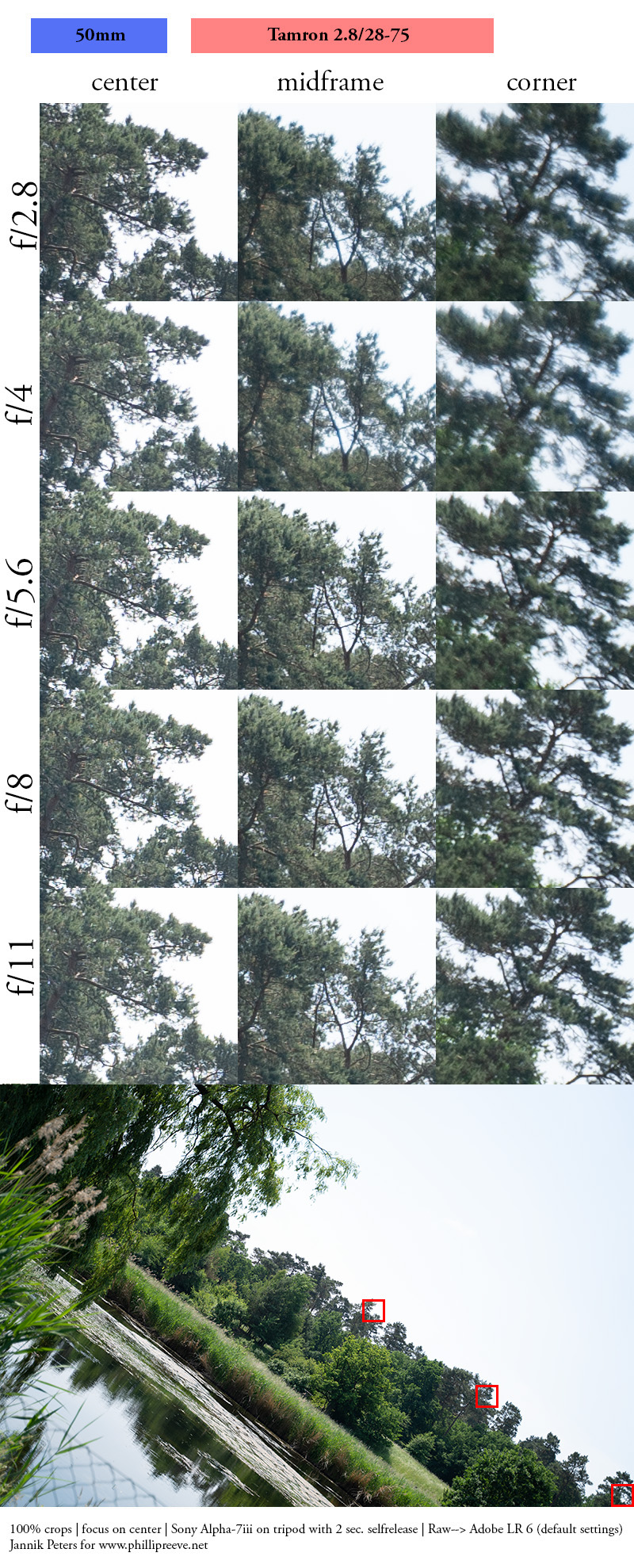
75mm:
- f/2.8: Center and midframe are quite sharp. Slightly reduced sharpness and contrast, probably due to spherical aberrations. Corners are not very sharp
- f/4: corners sharpen up, center and midframe are excellent
- f/11: Best setting for corner sharpness. Corners are useably good but not very good there
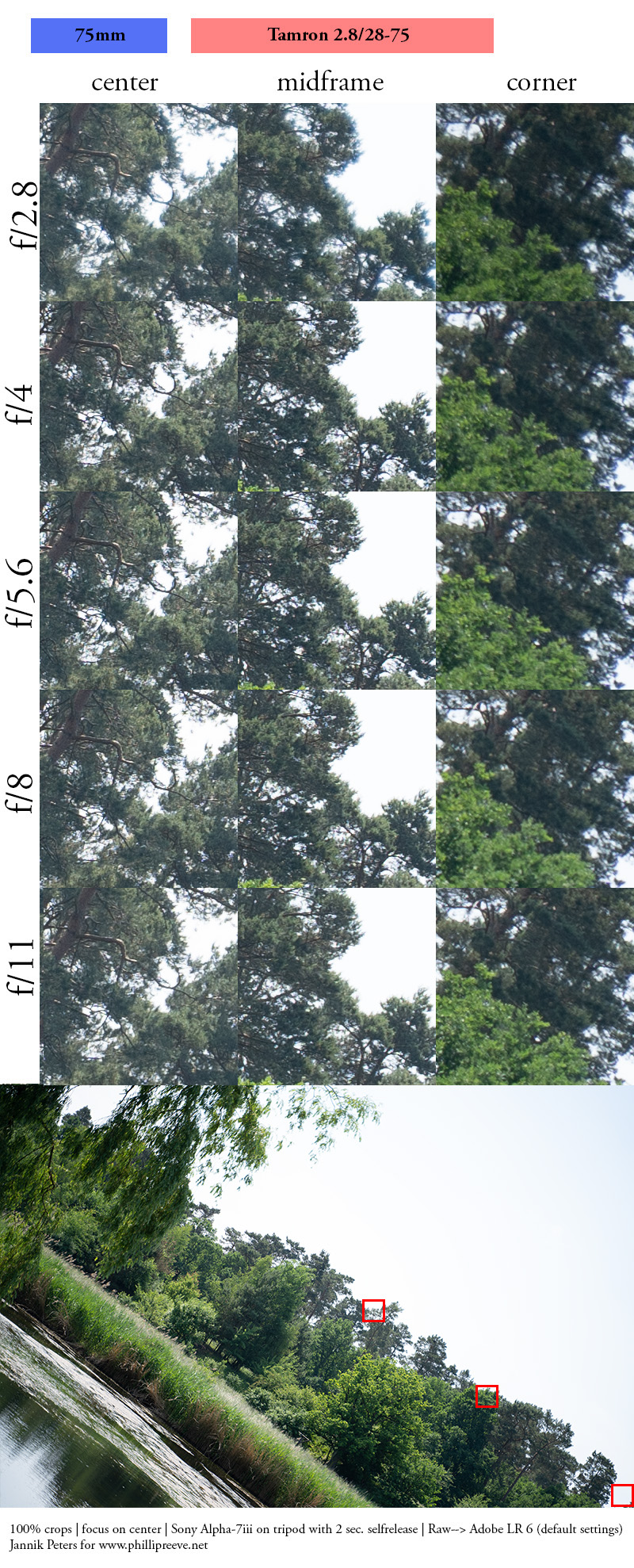
The central performance of the lens is always very good or excellent (only slightly degraded at 75mm) and the same applies to the midframe of the image, at least with a little stopping down. The corner performance at 28mm is very good stopped down. Unfortunately, this isn’t true for the other focal lengths. The outer 5-10% of the image circle are always a bit mushy and best at f/11 which is at least useable for landscapes. Remember that the corners are already stopped down to f/8 wide open because of the extreme vignetting of more than 3EV. Field curvature is also not the issue here, focusing on the corners didn’t improve my results.
The good news is that the excellent midframe performance remains over 90% of the image circle, so this won’t be a very big issue in many real world scenarios.
I think the performance is quite in line with what could have been expected for a fast but very small and cheap standard zoom lens. It is a good performance apart from the extreme corners which looks like a fair penalty for the small dimensions.
Close focus
The Tamron 2.8/28-75 has very nice close focus capabilities with 1:2.9 magnification at 28mm and 1:4 magnification at 75mm.
Generally there is quite a lot of field curvature at close up distances so the sharp area is very small, especially wide open. There are also some chromatic aberrations in the corners at close distances. This is not an issue for insects, flowers and general macro work but I wouldn’t recommend it for reproduction work.
The good thing is that the sharpness on the focused area is quite usuable wide open and very good stopped down.
28mm:
Wide open, the (very small) sharp area is contrasty and quite sharp. At f/5.6, the image crisps up quite a lot. Keep in mind that the front lens almost hits the subject at the minimum focus distance and that shading of the lens can become problematic here. Look at the full image below, it is visible there:
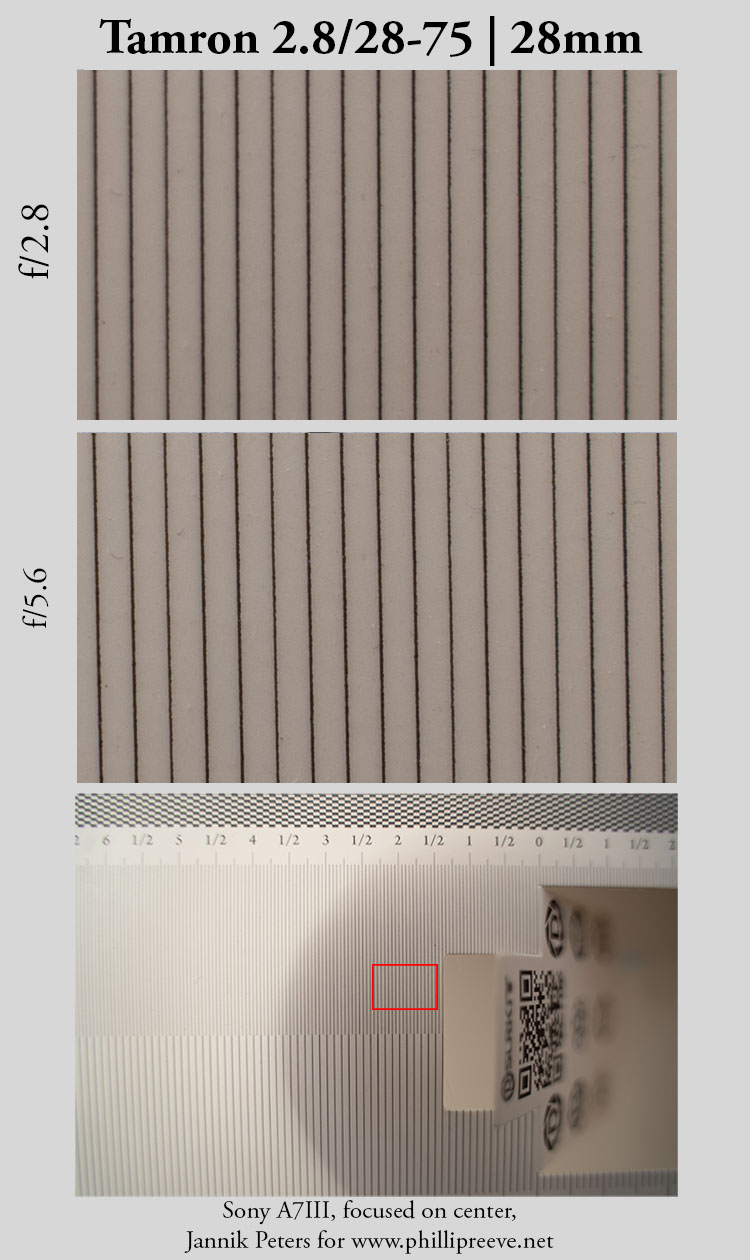
75mm:
Wide open, there is a loss of contrast due to spherical aberrations (same behavior as on infinity). Sharpness is useable but I would recommend to stop down if possible because things look much better at f/5.6.
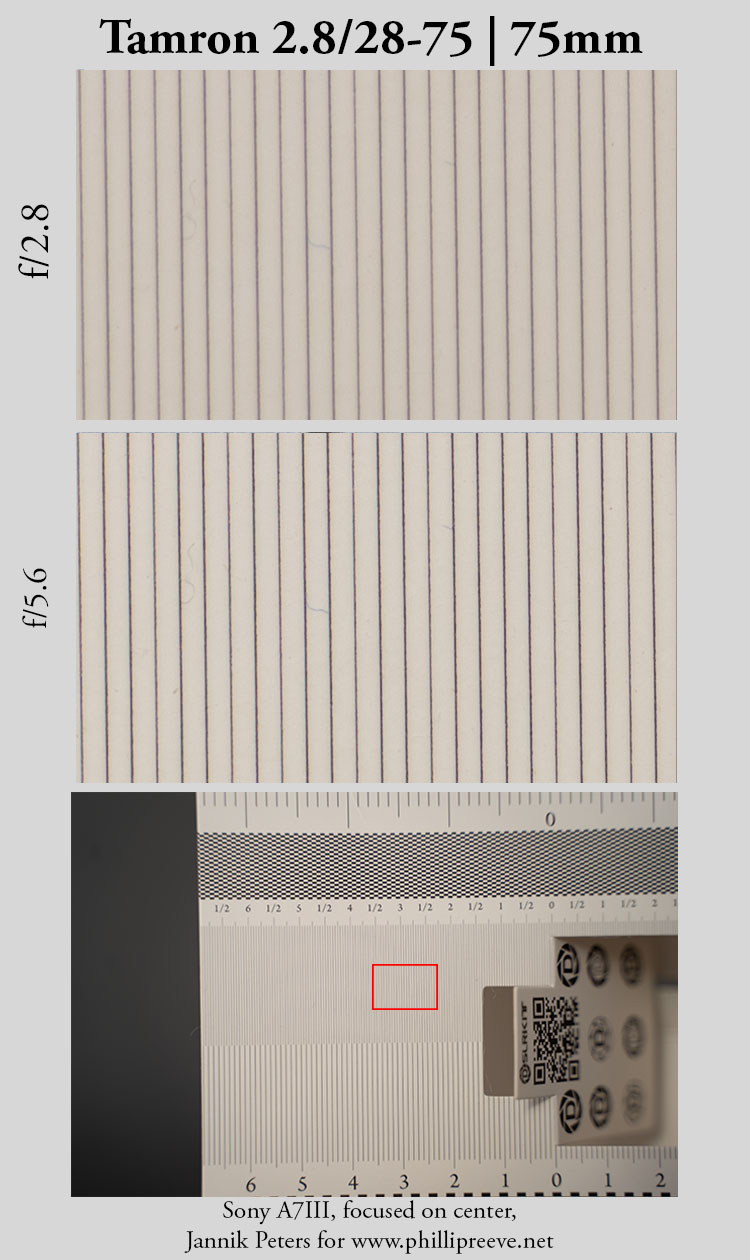
Distortion
28mm:

- Moderate barrel distortion
- +8 in LR
35mm:
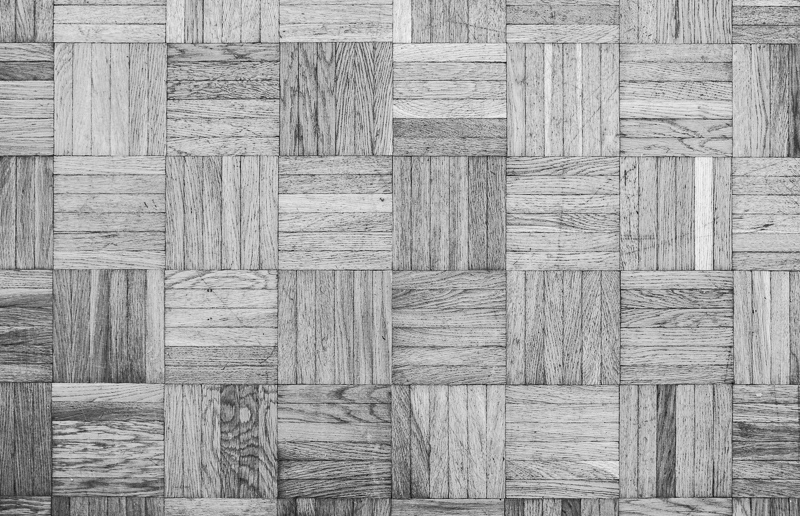
- Barely any distortion
- +1 in LR
50mm:
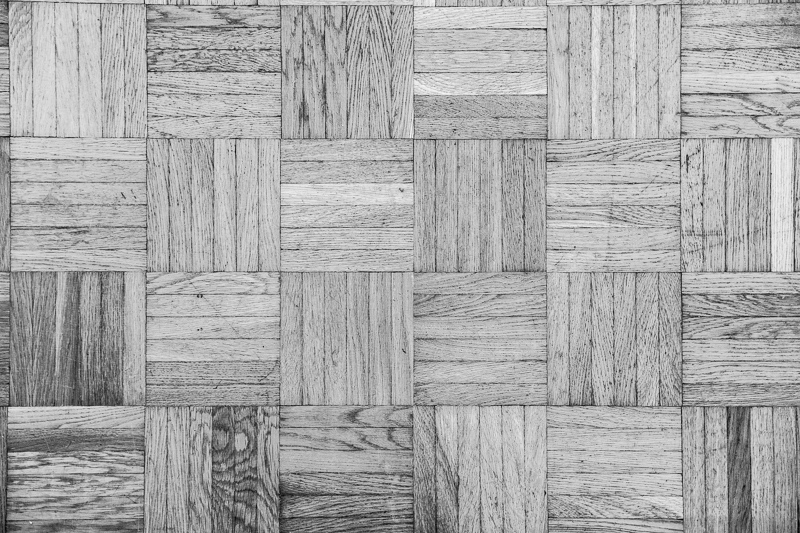
- Moderate pincushion distortion
- -6 in LR
75mm:
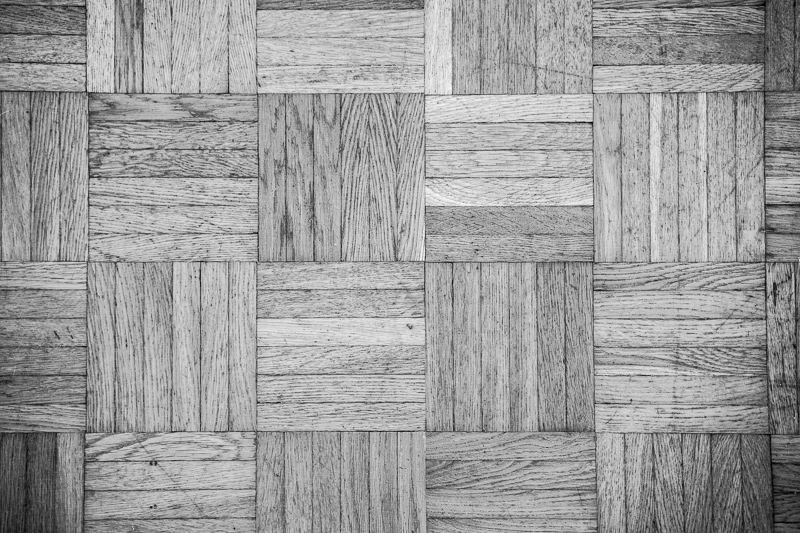
- Moderate pincushion distortion
- -7 in LR
Bokeh
The bokeh of the Tamron 2.8/28-75 is rather complex to describe. It can draw almost all varieties of good and bad bokeh that are possible. Lets start with the good. The close up bokeh is generally smooth, especially around the close focusing distance. Surprisingly, the quality of the bokeh is the best at 28mm.




Let’s take a deeper look on the complex aspects of the bokeh. All of these phenomenons are distance and focal length dependant. This lens uses an aspherical element. I was expecting to find onion ring structures in the highlights and I found them. Interestingly, very little images are plagued by that and onion rings can be generally more pronounced on other lenses like the Sony FE 1.8/55 ZA. The crop below shows that. Thanks to 9 rounded aperture blades, the shape of the bokeh balls remains almost round until the edges at macro distances, even at f/8. There is also bright outlining visible, but this isn’t too pronounced at that distance. Overall nothing that worries me too much, but that needs to be mentioned here.

If you look a little further than the usual macro distance (that bike below is around 40cm long), the outlining gets much stronger. Onion rings are barely visible now. There is also quite a lot of contrast in the bokeh (and the image overall, nice pop here!). Generally, the bokeh looks a little distorted and more “wild”. The light circles get cut off at the outer part of the image due to mechanical vignetting. The bokeh in that image is far from perfect but it looks quite interesting.
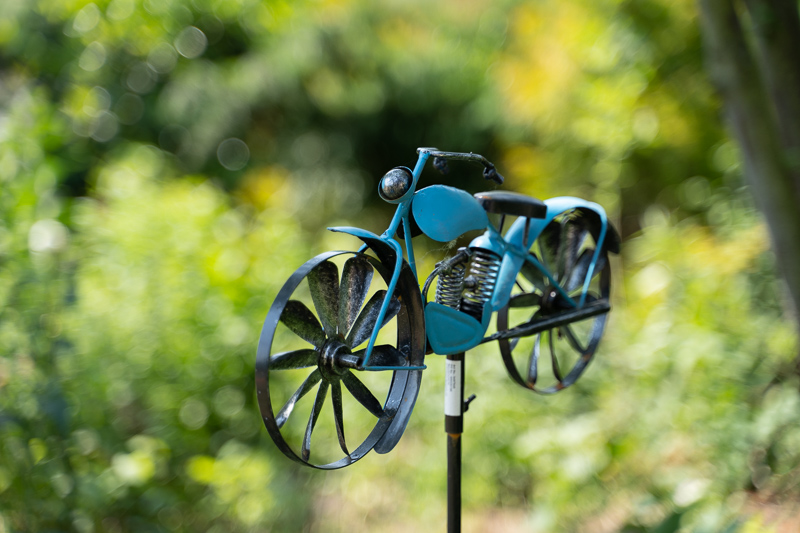
In another example with brighter background lights, things look much worse. Some highlights look very blurred and distorted and the outlining becomes terribly obvious for very bright light sources. I don’t like the bokeh here at all, it is very distracting. Lovers of the famous Trioplan could like it though.

At environmental portrait distances where the background melts together with the transition zone, things look even a bit worse. The background has a lot of contrast and shows wild and blurred structures which are mixed with bad outlining. This also looks a bit like the bokeh of many legacy lenses.
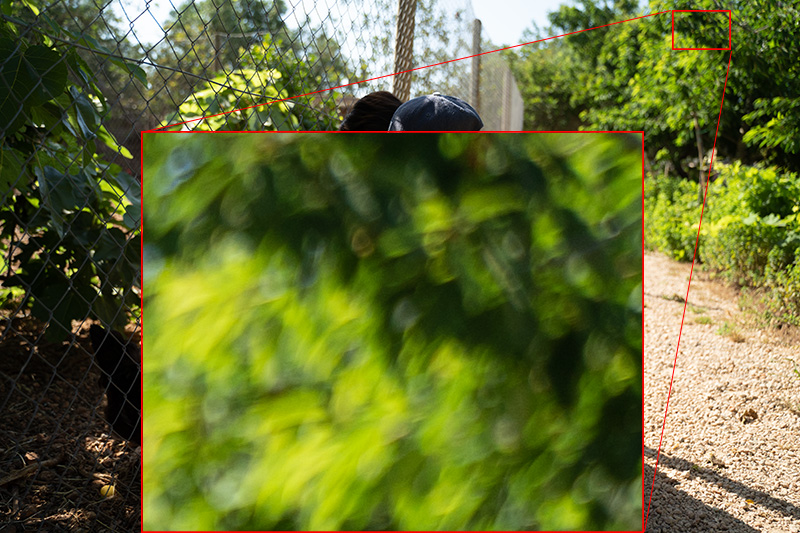
Around 50mm the bokeh can look like the bokeh of a mirror lens:
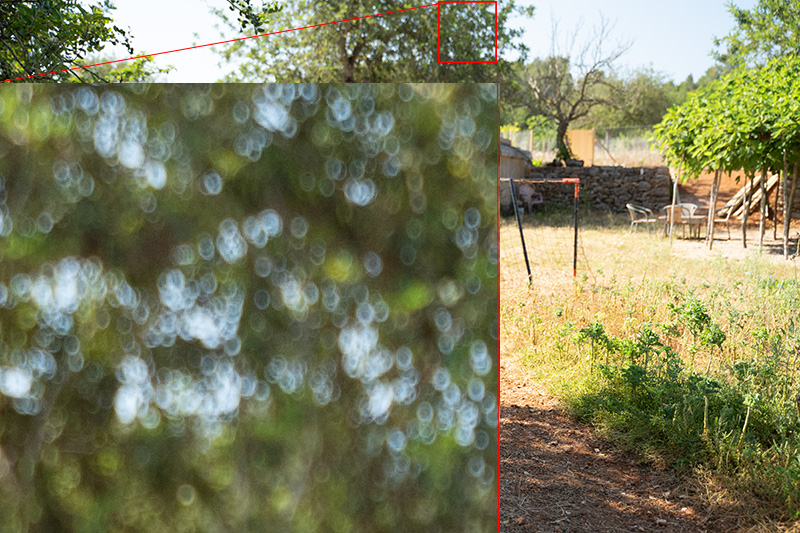
The following crop shows the outlining and the cut off bokeh highlights at 75mm:
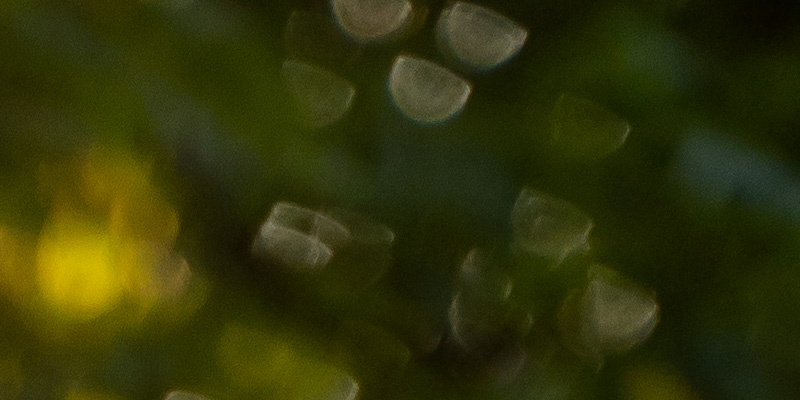
Bokeh is a very subjective thing. I prefer smooth and clean bokeh that is not sterile. The Sony 1.4/85 GM is a good example for that, the Sony FE 2.8/24-70 GM renders also much smoother bokeh. The perceived subject isolation can also suffer a bit from very structured bokeh.
On the other hand, I read many complaints about sterile rendering and I see many people using lenses like the Trioplan or other lenses for their “character”. These people could like the bokeh of the Tamron 2.8/28-75 Di III RXD, it definitely drags some attention on it.
Flare Performance
The Tamron 2.8/28-75 Di III RXD can flare heavily at all focal lengths and in many different ways. It is a pity that the ghostings can be huge and ruin a shot. Flare performance is very critical when the lens is pointed at the low sun but less critical when the sun is outside of the frame or higher on the sky. Ghostings are more of an issue than veiling flare. Zoom lenses are generally more critical in terms of flare resistance and this lens is no exception. Like with other lenses, playing around with the position of the light source can help to reduce the flares. Compare the shot below with the shot in the first sample image selection.
I don’t like the decision to use the older BBAR coatings for this lens. Tamrons high end lenses use different coatings which are called eBAND. I guess this decision kept the cost down but I would choose a premium for better coatings if I had the choice. I can only guess how this would have affected the flare performance but an improvement would have been useful in this case for sure.

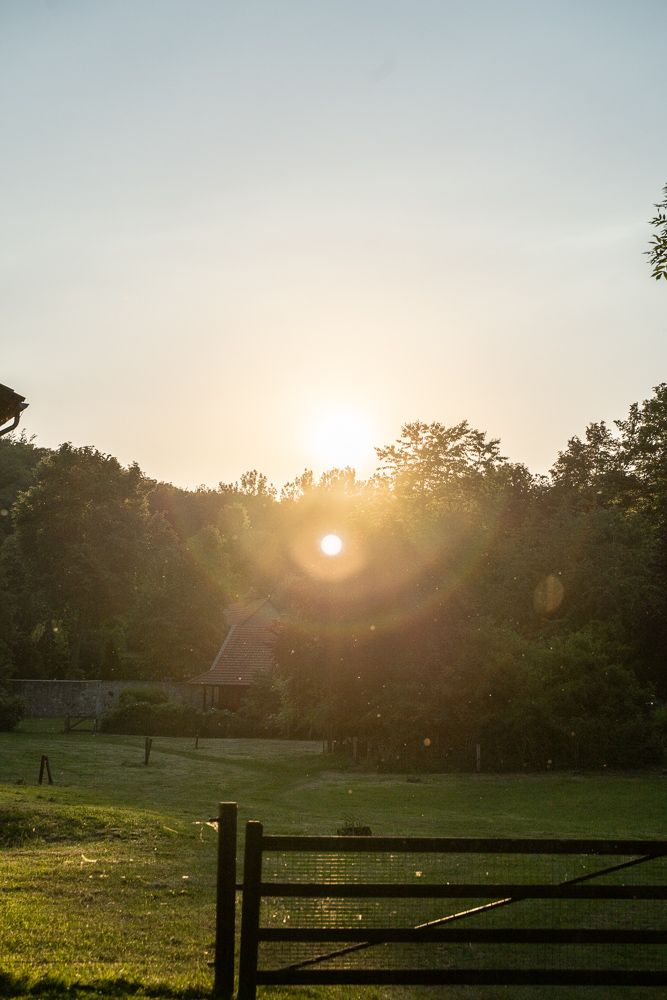
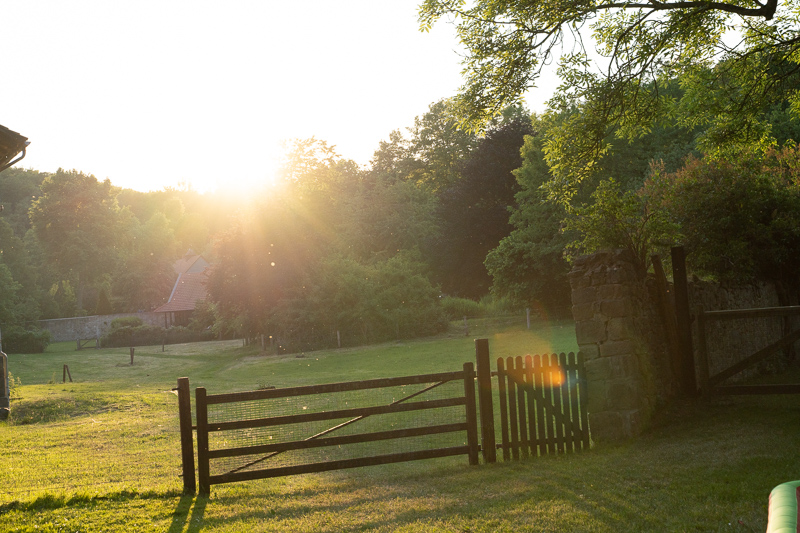
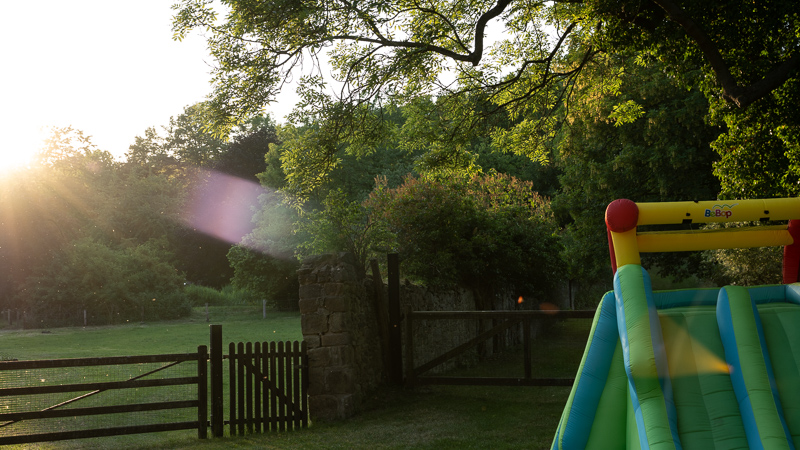
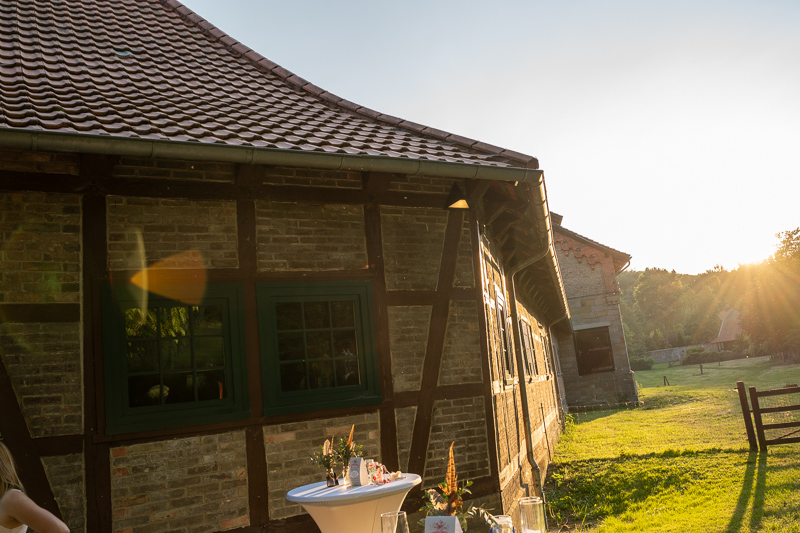
Chromatic Aberrations
Longitudinal
Correction of LoCA is very good, almost perfect.
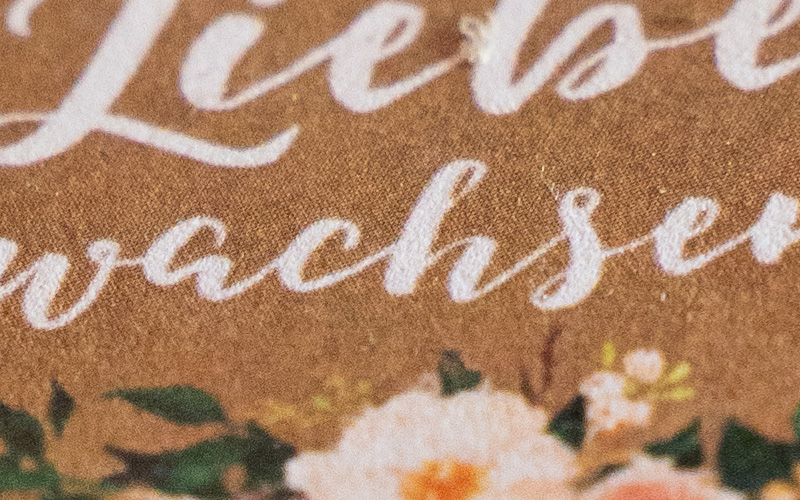
Lateral
I can’t find any LaCA in my images. There is an integrated lens profile and it does a very good job.
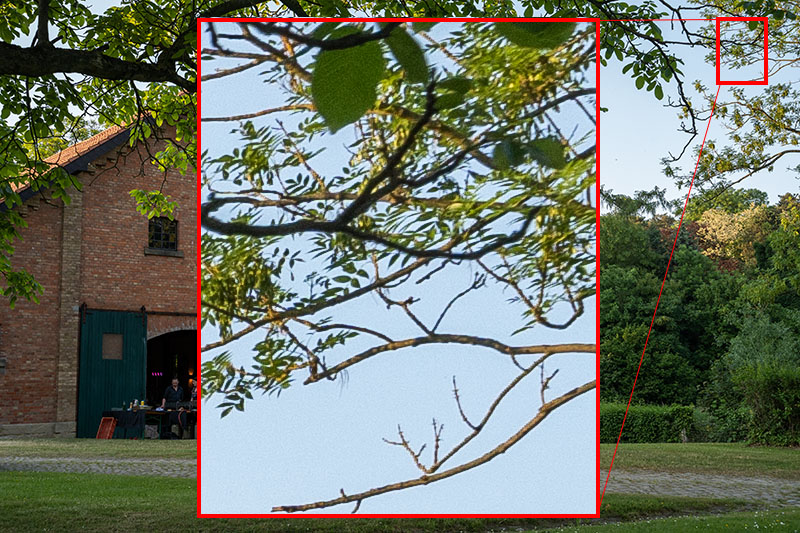
Conclusion
good
|
average
|
not good
|
The Tamron 2.8/28-75 Di III RXD is the first Tamron lens for mirrorless full frame cameras. The specs of the lens look spectacular and this holds true for the real lens. It is a f2.8 standard zoom lens that handles like the usual f4 counterparts.
The optical performance is in line with what I expected from such an extreme design. The lens has high vignetting wide open, the extreme corner sharpness is not on par with the best lenses. Stopping down helps a bit and 90% of the frame look excellent anyways.The lens has very useful macro features which helps a lot for documentation and travel work. The flare resistance can be critical when the (low) sun is in the frame. The bokeh has many facettes. Generally, it is very distance dependant – the closer the focus the better the bokeh. On the longer distances, bokeh is harsh and sometimes distracting. It is very handy that the images are almost entirely free of chromatic aberrations. Distortions are moderate and correcting them doesn’t have a big impact on corner sharpness.
In terms of build quality, the lens feels and handles like the Sony kit lens which is not bad but nothing to write home about either. Regarding handling, I don’t really like high (plasticky) friction of the zoom ring and furthermore the positioning of the zoom ring on the front of the lens barrel. The AF is quite fast but not the fastest and quiet but not silent.
The lens performs in line with my expectations. It is a handy lens with technical compromises and great usefulness. This is especially true with the price and the spectacular dimensions in mind.
I think that people should not make the mistake to compare it to the Sony FE 2.8/24-70 GM. Except for the fact that both lenses can serve the same purpose and have close enough specs, this lens is aimed at a totally differently customer and should be understood like that. The GM is a real pro lens with amazing build quality and much more rounded performance but also with much greater weight and size.
For me, the Tamron 2.8/28-75 Di III RXD has one task – be an uncomplicated, bright and handy zoom lens. It fulfills that task very well and I am happy with the crisp and vivid results. I am in the lucky position to have other lenses for wide angle, landscape and portrait photography so that the Tamron is mainly covering the event, everyday and holiday tasks. It is very well suited for that and it is a very realistic option for these tasks regarding the very fair pricing.
If you found this review helpful, consider to buy the lens with one of these affiliate links. It doesn’t cost you anything and keeps this site running and independent:
You can get one for $899 at Amazon.com (affiliate link)
or 829€ at Amazon.de (affiliate link).
Long Term impression
I used the Tamron 2.8/28-75 for five months now and it still sees very frequent usage. After letting all the technical details that I worked out in this review fade a bit, I see the value of this lens even more. It is just great to have the speed and zoom range at this size. The fast and silent AF contributes to its usefulness. I was a bit sceptical about the build quality and still think that it could have been made a bit better but this has not become an issue so far, not at all. I put the Tamron through almost all paces that one can think of – two weddings, mountains, bad weather, a family holiday, several birthdays and of course my never resting kid. In all these situations, the Tamron 2.8/28-75 was a great companion that didn’t let me down. Furthermore, the low aberrations and the good sharpness over most of the apertures and most of the frame makes this lens post-processing friendly. The value of a lens can sometimes be bigger than the sum of its sometimes problematic parts. This lens is a good example for that.


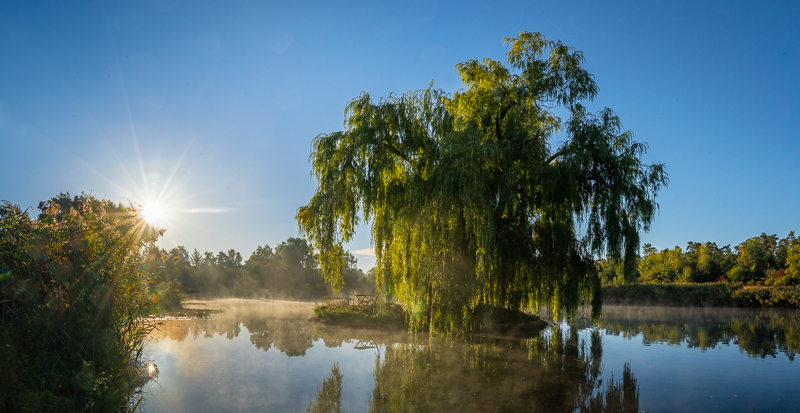


More Sample Images


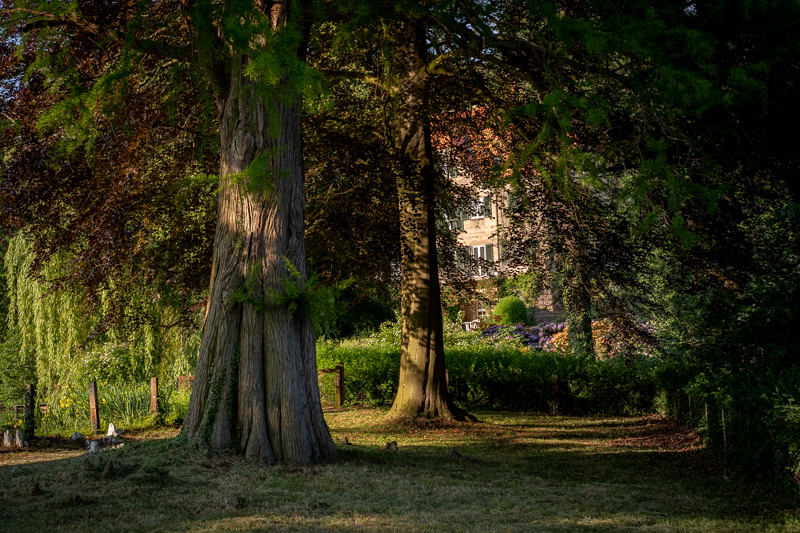
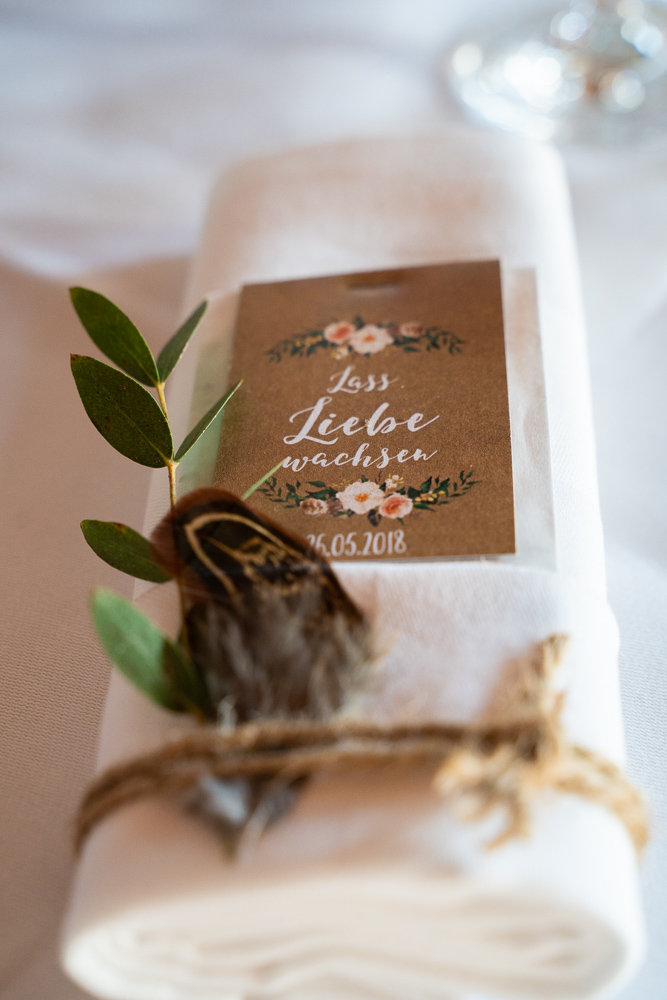
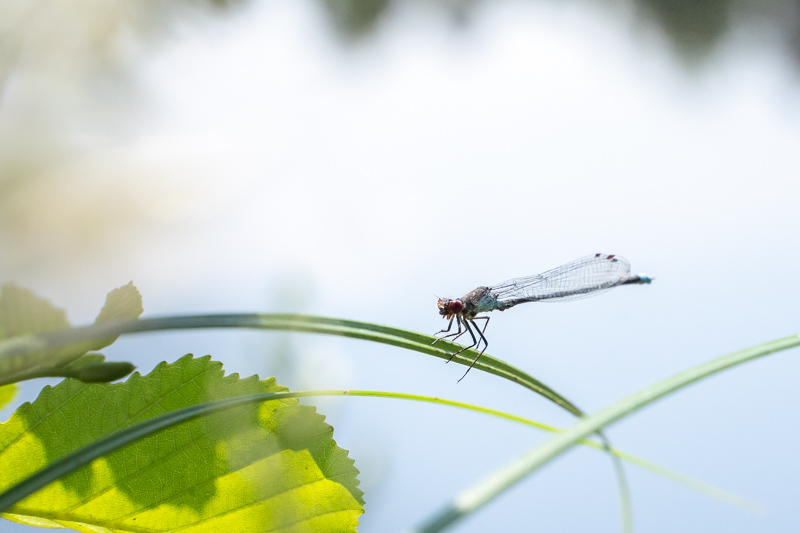
Further Reading
- The best lenses below $499 for the Sony A7 series
- Zeiss Loxia 2.8/21 Review
- Leica Summicron 90mm 2.0 pre Asph Review
This site contains affiliate links. If you make a purchase using any of the links marked as affiliate links, I may receive a small commission at no additional cost to you. This helps support the creation of future content.
Jannik Peters
Latest posts by Jannik Peters (see all)
- A beginner’s guide to bird photography – Episode 1: Sharpening your senses - August 3, 2021
- Review: Tamron 35mm F/2.8 Di III OSD M1:2 - March 8, 2020
- Review: Zeiss Batis 2/40 CF after the Firmware Update - August 16, 2019
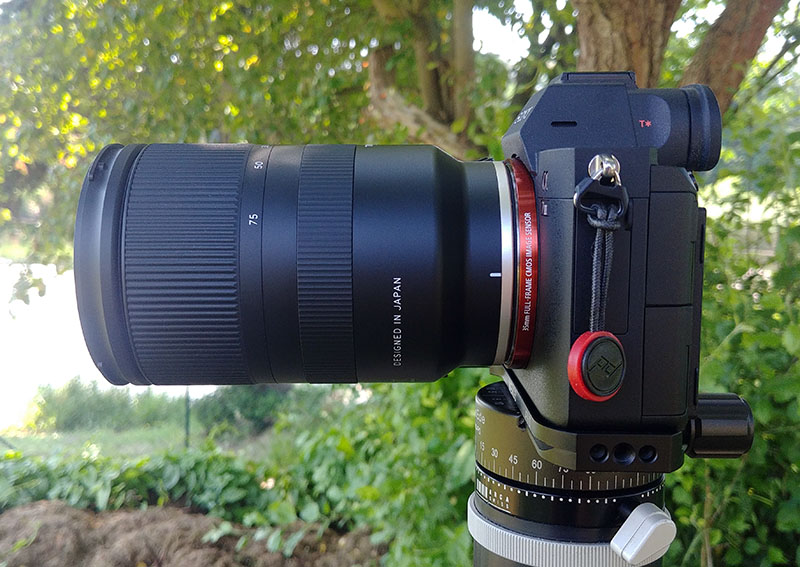
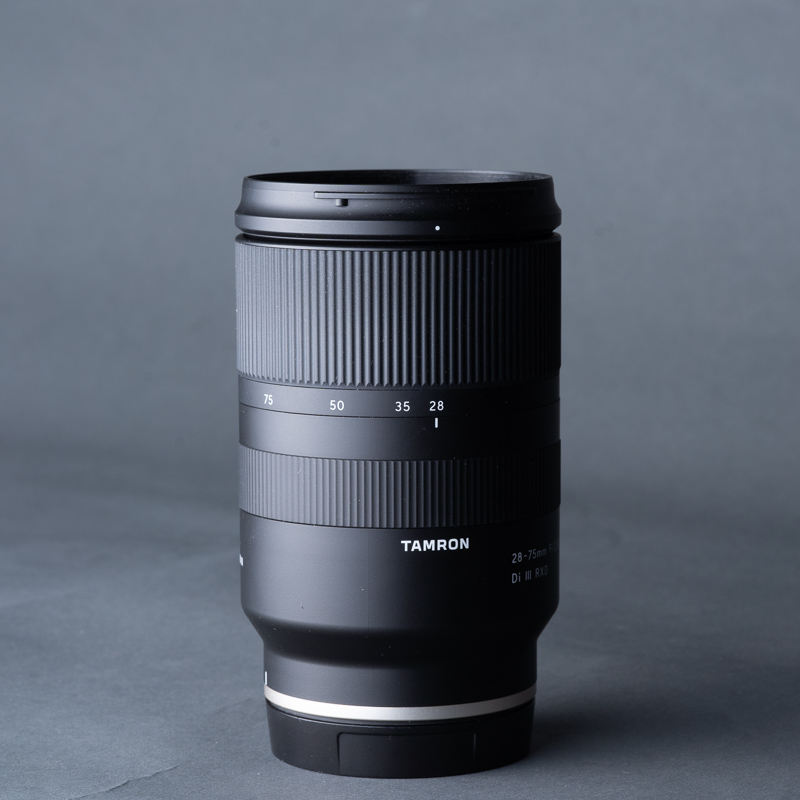
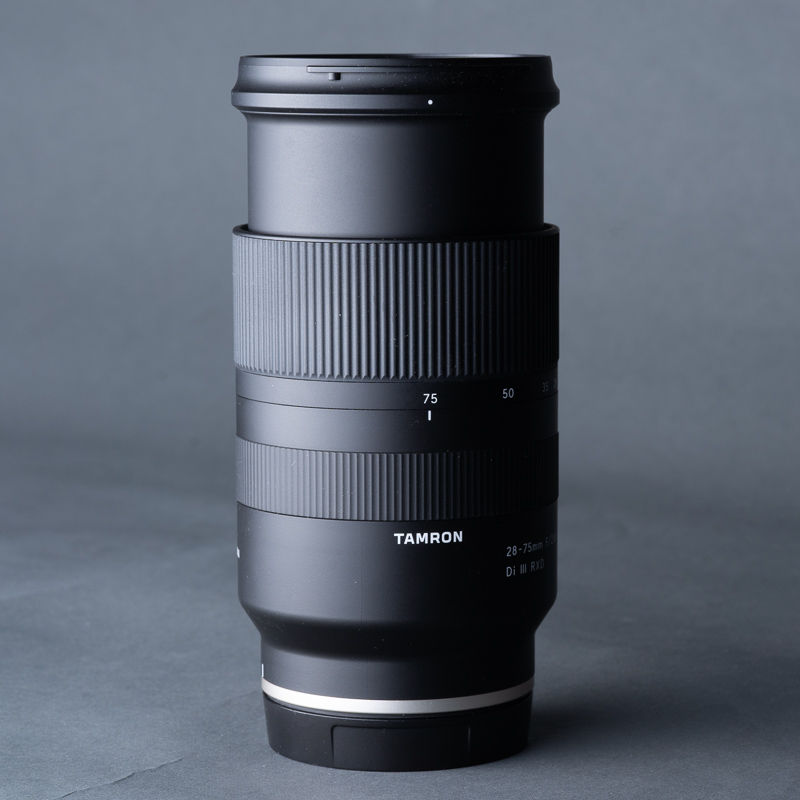
Well done Jannik. Those corner results, except at 28mm, don’t look too good for landscapes. I think your conclusion is spot on. (I’d love to see a comparison with the native FE 24-105 G.)
Of course, what I’d really like to see is a completely redesigned/improved ZA 24-70/4, as good as the GM ;o)
+1 on the improved ZA 2470/4!
It’s a cheap, compact standard zoom. Nobody expects stellar edge performance from such a lens, right. And even with all the compromises and shortcomings, your example photos look excellent, charming and have just a lovely, natural rendering to it, that only Tamron does. Nice one.
I’m not a fan of zoom lenses, especially standards and wides. I’d like to see their SP primes natively for Sony E. Though, Tamron is especially known for their (super) zooms. At least I’d like to see their compact 17-50/2.8 for APS-C.
“It’s a cheap, compact standard zoom. Nobody expects stellar edge performance from such a lens”
Actually I did. I have seen so many reviews where people said that they sold their GM after trying this lens. Based on this review, it is no better than the Sony kit lens – maybe worse, except for being F2.8 of course – but 4x the cost.
Hi Robert, I have both kit lenses and this lens,. and there is no comparison. This review portraying this lens worse than they actually are. They are sharp, fast and best of all you can shoot 2.8 landscape with the whole picture been in focus. that by itself, just blows my mind. Anyhow it is the great price of glass for any enthusiast and for the price in a no-brainer. if you look for superb G-Master quality, well you will have to pay 3x more. However having G-master glass too, I’m not seeing 3x better performance,.. quite frankly if i’m not pixel peeping,. I would say, overall, I prefer Tamron. Somehow all shortcomings of this glass create a positive effect on the image look and feel.
I totally disagree with that statement. I recently switched over from film to the Sony A7III. (a gift from my wife) The A7III came with the kit 28-70 kit lens. The build quality was awful and the photo quality was even worse. So bad in fact I sent the camera back to BH Photo for an exchange. They sent me my replacement and wala!! It was not the camera. It was the awful lens. I stopped using the lens and started using my manual SLR lenses and then I really started to enjoy the camera. I have since purchased the Tamron reviewed here and it is built much better and takes beautiful photos compared to the cheap lens Sony ships with the kit. Is it awesome? No, but it is definitely worth the investment. f you need a starter lens to get familiar with the A7 then skip the kit lens and buy this. For as nice a camera the A7III is, Sony really did it an injustice with the kit lens. Why build something so capable then hamstring with junk. If I had based my opinion of the camera on the quality of photos I was getting with that lens, I would be using a Nikon or Canon by now. Oh and the A7III plays nicely with my manual lenses so that open up the door for some creative fun. I cannot wait to try the GM lenses on this camera as well but as of this time I have not added any to my bag.
I have been waiting for a review of this zoom lens for a long time. Job well done Jannik!
I have read a few times on your webpage, that you find the manual focus on the 3rd generation Sony camera bodies somehow enhanced (regarding the manual focus from the native Sony lenses). Could you please give us a description (or even better a special article), comparing the manual focus performance of the 3rd generation bodies vs the old generation. Is it really a big difference?
Thank you for your answer in advance. I would also like to thank all of the phillipreeve.net team members for doing an awesome job with publishing the best articles on this webpage. Keep up with the good work guys.
Support from Slovenia!
Primož
Thanks Jannik!
– I have also been using the lens extensively over the last week (1000+ images), and have found it almost identical conclusions: It will exactly meet its purpose for a (relatively) inexpensive, light, compact, standard 2.8 zoom. It may not replace primes for the once in a lifetime photo spots, but it certainly can be a single lens option for 90% of events, or paired with a wide angle (and/or tele) for most situations when zoom quality will suffice.
– I noticed the sunstars are attractive, albeit not my favorite (you have several examples) from about F8, getting even more defined around F16.
– Have you noticed any focus errors reported on some websites? I have only noticed 1 shot that I fully expected to be in focus (took a time to focus at 75mm on a distant mountain), and it notably missed focus despite a green focus verification. I’ve shot enough with excellent focus at this point to not be worried, but curious your experience.
– I have also noticed every-so-slightly worse autofocus performance versus native lenses, but it could be in my mind…not quite as quick to catch the correct subject in AFC or tracking modes. Certainly nothing I would be bothered by if I wasn’t comparing side by side chasing my kids on a mountain trail.
– You are definitely correct about built quality – a modest tap against some metal has already scuffed the lens hood. I’m guessing it will not look good for long, but as long as it performs it will be a useful tool in my bag. Thank you for your hard work on this – this remains the BEST review site on the web.
There is a new firmware update available adressing the autofocus problems in video mode: http://www.tamron.com/news/press_release/20180705.html
Nice review like always and was waiting for this one. Could contain myself buying one and happy that I didn’t. Like you mention it’s indeed what we could expect regarding overall sharpness.
Find it still importent when I’m doing landscapes to have good corner sharpness when mounted on my Sony A7r3.
Have the Contax 35-70 f3.4 and use it mostly when my Sony 16-35mm becomes short. Like said before it’s always attached to my Mirex TS adapter. Would mis this combo. My only problem is the turning frontlens, when used with gradual ND filters which I’m using quit often.
And yes, would like to see a review of this lens because it’s a real compact little gem. It4s rather difficult to find these days.
Still have the Canon 28-75mm f2.8 II from my previous Canon-life and tested it on the A7r2
. Extremely sharp in the middle but the corners stay a behind, even at f8. The Contax is performing much better
Bought the new Metabones but regarding AF it’s not working like it should. Was hoping that the “new Metabones” plus Canon 28-75mm would perform better than the previous version, but nada. Even the latest update didn’t give me better results. Maybe another adapter performs better, help asked here.
Curious how it performs against the new Sony 24-125 f4, see a lot of good reports on this lens and remember using the Canon version (previous life) quit often during family trips or holidays.
Think it will have similar IQ.
And indeed must say that this site is one of the best reviews. The sharpness is always tested at or near infinity and not on a target a few meters away. Very important to see how a lens really performs for landscapes.
Hello, I am having some issues with corner sharpness using Sigma MC-11 and Sigma art 24mm or Samyang 14mm 2.8f lenses. It seesm that the corner sharpness problem is due to the fact, that Sony have too short flange distance. And everything that is adapted to it and goes beyond 35mm will provide poor corner sharpness no matter what :/ So far I havent tested any Sony E wide angle lenses, but as far as adapted lenses from other systems, I gave up on trying different adapters.. So work better than the others, but clearly not at the same level of quality that I had with my Canon 6d.
Sounds more like an adapter issue to me. The very finest wideangles available at the moment come in E-mount.
Very good review!
It made clear I do not want one.
Very nice review, Jannik, thank you. Performance looks good for the price/size/speed. It’s interesting that the corners look better wide open at 28mm than they do at f11 at 35mm. Haven’t seen that before in a zoom but then I haven’t much experience with a lot of zooms. Most of the frame looks pretty good across the zoom range and this should be more than usable in most applications. It’s probably fine for landscape as well, but you might have to be careful about framing and make sure you don’t have anything interesting in the corners of the frame past 28mm.
Bokeh looks pretty interesting as well. Definitely not smooth but a bit more busy like the bokeh on my Loxia 50. I don’t mind this kind of bokeh but I know many prefer smoother varieties.
All in all not a bad lens. I’m not really a zoom guy so I probably won’t be buying it but it’s worth recommending.
I recently purchased the 4/24-105 and was wondering whether I made the right decision versus waiting for the Tamron. Your review has helped me confirm that the 24-105 was likely the right choice. I am traveling with this lens now and look forward to seeing exactly how my shots have turned out. As far as the 24-105 goes, it rarely has left my camera (Sony a7iii) and I can attest to its’ build being first rate and it balances nicely on the camera. I believe the extra 4 degrees of width at the wide end is very valuable and the extra reach provides great flexibility. The main advantages of the Tamron over it would only be the weight and the cost. The rest of my current travel kit consists of the FE 4/16-35, the FE 1.8/55 and the Batis 2.8/135. Potential future changes to this kit would be to replace the 4/16-35 with an UWA prime and replace the 2.8/135 with one of the longer zooms (but it takes such beautiful photographs it will be hard to let go of this lens!).
thank you for great review, for my question, can this tamron replace my Sony FE 16-35mm f4?
Finally!!!!
I was looking through the web and all the lame time wasting reviews of that lens that concentrate on the things that you can read on manufacturers website.
And here I found practical use descriptions, different picture examples, valuable comparison to other lenses.
Thank you Sir and keep up the good work.
OK, it’s good, surely a bargain compared to the overpriced 24-70 f4 (my copy is decentered, too!), but the zoom range? I’d go for the 24-105. The Canon L version was always attached to my old 5dII. Anyway, It’s surely a very good thing the third party producers are offering more and more FE AF lenses. Come on Sigma!!
Helpful review, thank you. Did you experience any of the autofocus problems that some people are describing on the forums? (And Tamron is working on a firmware fix) Some say there is “front focusing” at times, especially with AFC. It’s difficult to pin down because there are so many different ways to shoot, including shutter release priority.
Thanks
Art
Nice to have you back, Jannik!
Also start to using my sample. I agree with most parts, but have some supplement on macro performance. The very small sharp area as you have describe is not (totally) due to field curvature, but because the lens simply loses resolution out of it. This is especially apparent at 28mm and minimum object distance: even if I tried to focus at something in the outer area of the image, there is simply no resolution and a hilarious amount of CA. Could be a problem if you want to place your object at the 1/3 point. A little farther away from the object, the problem clears up very fast though.
…Grazie per le tue sempre accurate recensioni…aspetto di vedere la comparazione col 24/105 prima di scegliere…
Reading the review, it sounds like a mediocre lens, but the sample images are quite lovely!
I agree with Zlatko above, regardless of the caveats Jannik, your photos with it are great ;o)
Thanks for the flare tests, I hadn’t realised that they’d reverted to the older BBAR coatings for this lens, as you say, that seems a bad mistake. As a landscape photographer, nearly always shooting towards the sun, that puts me off this lens more than anything else negative, that you’ve said.
Flare resistance is one of the worst things to cheap out on 🙁
Hey Jannik,
great review(as always)! I have one question. Did you have an auto focus issue with your lens? Some users report a problem with the AF on the tamron. The focus freezes and don’t work anymore. To solve this problem, you have to turn the camera off and on again or dismount the lens.
Schönes Review!
Es wäre super, mal einen direkten Vergleich zu folgenden Linsen zu sehen:
-Sony 2,8/24-70
-Tamron 2,8/28-75 uralt für A-Mount
-Minolta 28-135 von anno ’85
Hmmmm – pics are not really sharp ….
I’m digging that second capture of the couple at the dance. Nice lighting and pose.
Thanks for the review. I have also been using this new Tamron on my A7RIII for a couple of weeks now. It is a powerhouse lens considering it price. I have some Sony GM glass and love them. I purchased the Tamron in place of the Sony FE 24-70mm f/2.8 GM (great lens) and it is doing a perfect job so far. It has fast auto-focus in all native modes and the images a pin sharp and when they are not it is usually due to user (my) error. I do miss the 24mm although I have other options here if needed. This lens was never meant to replace a prime as is the case for any tele lens. I have not experienced any auto focus issues although I have not shot many videos to date. I note that several AUS users have not experienced this auto-focus issue so maybe its a specific batch problems as the lenses shipped to AUS have not reported this issue to-date. I note that Tamron are already addressing the issue with a firmware update which is good to see). The lens stacks up extremely well against the Sony 24 70mm f/2.8 GM across the board as can be seen in Dustin Abbott’s recent reviews on YouTube. “Tamron 28-75 RXD vs Sony 24-70 G-Master Part 1” – https://www.youtube.com/watch?v=iU7ZVQf9WyI
I expect that Tamron will surprise us all with their future Sony E mount offerings as they did with lens range for for both Canon and Nikon.
Pity Tamron’s big play didn’t make the impact they hoped for. It’s only relatively inexpensive, and has a few too many flaws to ignore, unfortunately, and this with just static images. Still need an idea of how well AF fared from users. Price isn’t as important to many as performance. Might be better to spend a little more on a native lens and get more for your money.
The transition to pure E-mount has taken a bit longer than I expected for third party makers. This was Tamron’s big moment to shine. Many are resolved to stick with the AF Sony/Zeiss selections for AF uses, along with many non-AF models from other respected makers.
I don’t know what you are talking about. The lens certainly made a splash all around the world, as it was backordered on many markets. All things indicate that it is selling like hot cakes.
Exactly. For me its still one hell of a good lense for the price.
😀
hello,any chance of having real size samples to check out ? any intention of comparing this lens with other zooms ? thank you !
Jannik is super busy with work at the moment. But when he finds the time to finish the review he will certainly add images in full resolution.
Have you had (or heard about) issues with dust getting into the lense?
This seems to be areal issue.
Great in-depth review. Most importantly, with critical pictures!
Best review site ive ever seen
Great write up as always, the team.
I am expecting a FE24-105 review from you. Hope you will do it at some point.
A bonus will be 18-135 review but i know you no longer look at APSc lenses?
I’m completely amazed by the lack of CA and completely horrified by the out of focus rendering.
Confusing.
Hello, i’ve read your review.
I’m a happy owner of sony fe 35 f/2.8 sonnar *T ZA.
would you sell it for this new tamron?
Obviously i’m talking about the focal length of 35 mm.
At 35 mm are comparable? or better keep the sony?
I like to have more focal length (28-75) but i don’t want lose quality of the picture.
Jannik is currently busy.
When I carry the Tamron I would not bring the 2.8/35 Sony as well.
It might make sense keeping it as small, portable option though.
I bought this Tamron one month ago.
Perfect full frame combination with my Sony A7ii (in all aspects including price).
Thank you, Jannik. While I obviously prefer primes myself, this would be nice for those among us who don’t wish to break the bank for a versatile “walk about” zoom lens. That said, despite the size and weight of the Sony F4, I think that beastie is clearly the better choice in optical terms.
Is the optical formula the same as the 28-75mm 2.8 zoom for Sony/Minolta A .
Have you had (or heard about) issues with dust getting into the lense (under front element)?
This seems to be an issue for some.
(I also have this problem with my sel 70-200f4.)
No dust that I can see so far.
Over time this will happen to every zoom lens and most primes as well.
Do you or your colleagues think that you will review the Sigma Full Frame E Mount lenses ?
While they are fine performes and relatively affordable their size makes them less interesting to us. If they make actual mirrorless designs that might change.
I used to use the 50mm 1.4 Art when I was shooting Nikon (mostly due to lack of decent alternatives), but the brute force approach of highest resolution in the heaviest and biggest package does not appeal to me at all. In a time where almost everyone wants “the best” and “the best” is only defined by easy to read and compare test charts those lenses appeal to a wide audience though.
how does the tamron compare at the wide end to the sony FE2/28?
Is there a reason to keep the prime when u got the tamron zoom (apart from obvious size/weight)
I don’t think performance is a reason to prefer the Sony over the Tamron.
Should I replace all of my prime lens (FE 28F2, kit lens 2870 and samyang 85 f1.4) to get this lens 2875?
That depends.
Thank you Phillip for your answer, and I’m still wondering that if just considering the Image Quality, could this Tamron compare the sharpness with the Fe28f2? That’s the only thing hold back me before selling those lens.
The Tamron seems to be at least as sharp, probably sharper.
Hello Jannik, Thank you for nice review
I have Sony 16-35/4 for my A7III and I think to switch it to this lens. Is it worth?
Thank you
Hello Thommy,
these lenses are too different to replace each other. Get the Tamron next to the Sony or decide with the needed focal lengths in mind.
Cheers, Jannik
Dear Jannik,
recently I moved from Canon to Sony. For a while I used my Canon 24-70 F4 but now I would like to purchase a Sony E mount zoom lens. I’m not a big fan of manual focus like you ;). I’m hesitating between Tamron 28-75 and Sony 24-104. I’m mostly taking landscape pictures and pictures in the forest in particular old-growth forests with very big trees. I also have Sony 28, f2 and Sony 85, 1.8 but I’m not a big fan of changing lenses out on the field.
Thank you very much for your advice of which one of the two zoom lenses I have better take.
In place of Jannik who is on holiday: If you can afford it I would go for the Sony mostly because it is 4mm wider and a little longer with comparable performance.
I think I don’t want a structured, characterized bokeh in an all-purpose lens, like a 2x-7x f/2.8 zoom like this… and I don’t want to add one more aspect to keep my attention up either…
Does this lens perform well on the A7 (no built-in image stabilization)? I have the Sony 28-70 and looking for an upgrade, but worried about losing the IS.
This depends a lot on what you want to use the lens for.
At the long end the Tamron is 2 stops faster. At the short end not even 1 stop.
The in lens OSS is good for about 2-4 stops.
So if you mainly use the lens for architecture or landscape photography without a tripod the stabilizer is worth more than the f/2.8.
Thanks for your reply!
I would use it both for handheld travel and landscape with tripod. So you would opt for a lens with OSS instead?
This is a question I cannot answer for you.
If you use a tripod anyway you need neither OSS nor f/2.8.
If you are more into documentary style pictures of people at markets or something like that the f/2.8 would come in handy.
And how would this lens permorm (A7m1 body) in terms of autofocus?? It is not a native lens and camera itself has got worse capability the newer ones. Any ideas??
Regards,
Don’t think any of us has tried the 28-75mm 2.8 on the original A7.
Should work like the other consumer zooms (28-70/24-70 4.0).
hi nice review and your review has help alot in my understanding of lenses
i just got a A7mk2, how is this tamron works together with it ?
i just have a 50mm/1.8 and thinking to get another versatile zoom lens
I was going to spend a long time saving my pennies for the 24-70GM, and my uncle who owns that lens, told me instead to just go out and get the Tamron. I’m glad he did. This lens hasn’t left my RII since I got it. It’s everything I want in a lens: compact, light, great image quality, and (relatively) cheap.
I think the concerns about build quality are overblown, it doesn’t feel “cheap” to me, or like it’s going to fall apart in my hands when I use it. The build quality feels on par with my 70-300G lens, which I feel is no slouch.
Now I can’t wait for the 17-28 2.8 and I am keeping my fingers crossed Tamron will do a 75(?)-200 2.8, and I’ll be set with my “holy trinity.” My Uncle is selling his GM glass and probably going with Tamron as well.
Our guess is that Tamron will come out with a 2.8/75-150mm.
has anyone seen similarly bad bokeh on the tamron as shown here (4min30s):
https://www.youtube.com/watch?v=kGGfPJ2nyVw
this looks really awful, i’d say its a faulty copy what do you say?
The shape of the highlights looks extremely strange and while I personally I also don’t like the Tamron bokeh this does look like something is not right with his lens.
the last time I saw fringy bokeh like this, was on a lens with fungus.
I must say i can not understand the excitement about this lens, apart from the specs…
Dear Jannik,
Thank you for several great articles reviewing and comparing the Tamron 28-75mm.
I noticed your pictures were with a A7III. They are great.
Do you think the lens would work as well with a A7RIII?
I liked the lens when I tried it out at a dealer. It is, in a word, fun. I am just worried that the higher resolution and slightly worse low light imaging of the A7RIII might mean they won’t work well together. The GM feels too heavy for an everyday walk around lens.
If you get a chance I would really appreciate your opinion.
I’m looking at buying a Sony A7 iii and was looking at this lens. I like taking all sorts of photos in different situations, but I want something that will definitely work for my daughter’s basketball games (often in poorly lit gyms) Do you think this lens would be a good choice? I’m not interested in spending over $1000 for a lens. Thanks for any advice!
I think neither in terms of autofocus nor focal length this is the “best” option.
I think the Sony FE 85mm 1.8 could be a better fit if you are on a budget.
imo if you want to stay at $1000 the Sony FE 70-200 G f4 might be the best choice in terms of focal length and price (especially used). It’s only f4 but at high ISO you should be able to get the shots you want (set shutter priority to >1/250s and . The FE70-200GM f2.8 would be the best choice, but its more than twice as expensive (>$2000).
The FE85 f1.8 might be the best budget choice for lowlight (its 2 1/3 stops faster), but the reach is likely not enough.
Just tested my copy. I must say I was a little disappointed at 75mm. Rather mushy.
Very sharp in the middle at 28mm – 35mm and considerably weaker in the outer zone.
Compared to my Canon 24-70mm f4 + metabones. The Canon is less sharp in the middle but considerably sharper in the outer area. And at 75mm the Canon is in another league at f4.
Choose your poison I suppose.
I’ve had the sony 24mm-105mm f4 for a year so far.. I’m not impressed at all.. The bokeh is horrible and it produces some wierd colors.. I’m selling it to get this lens.
I doubt that you will be happy with the bokeh of this Tamron.